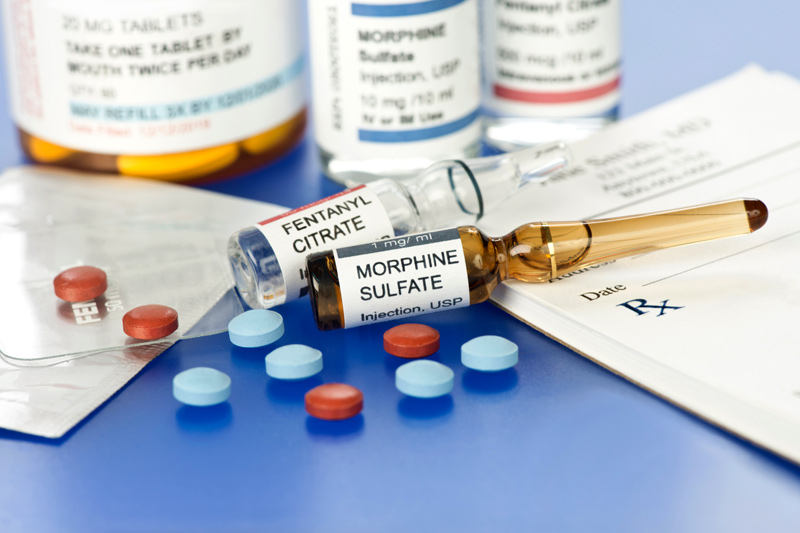The devastating impact of the overdose crisis in the United States has been well-documented, affecting people from all backgrounds, demographics, and geographic regions. The data tells us that one age group in particular has been overlooked in the overdose crisis – older adults.

The rate of fatal drug overdoses among people 65 years and older quadrupled between 2002 and 2021,1 and older adults with opioid use disorder are at a higher risk of death compared to younger adults with the disorder.2 More must be done to connect older adults with harm reduction resources and other services proven to reduce risk and save lives.
Older adults face unique and multifaceted challenges amid the overdose crisis that require tailored solutions. Many have chronic pain conditions – about 40 percent of older adults report pain, compared to 30 percent of the general population.3 They may lack information about how to safely use prescribed opioid medications, or they may begin to use the substances to treat emotional pain in addition to their physical discomfort.
In addition to the aforementioned factors, the emergence of fentanyl and xylazine in the drug supply also poses a particular risk for older individuals who may be unaware of the dangers associated with these substances, such as increased risk of overdose.
Furthermore, many older adults who live alone and use drugs in isolation are at increased risk for overdose. Loneliness is also a big concern – nearly one-fourth of adults aged 65 and older are considered to be socially isolated,4 which carries significant health risks, including higher rates of depression, anxiety, and suicide. Some may turn to substance use to cope. Finally, older adults can experience stigma and shame regarding engaging with help – they are less likely to seek support when experiencing challenges related to substance use5 or mental health concerns.
There is good news: overdose deaths are down6 overall for the first time in the past five years, in part due to the expansion of harm reduction services by community-based organizations like mine. Alliance for Positive Change provides low-income New Yorkers living with HIV and other chronic conditions with access to quality health care, housing, harm reduction, coaching, and peer training. Among our many services, we offer overdose reversal training, syringe exchange, fentanyl testing strips, group counseling, case management, and more.
In recent years, we have seen a local and national movement to normalize harm reduction as routine medical care. Now, we need to normalize these conversations for people of all ages as part of their routine screenings so that people who use drugs – both younger people and older adults – are having more conversations with professionals and their supportive networks about substance use and harm reduction. These interactions help remove stigmas and make people who use drugs more comfortable accessing preventative services. The worst thing to do is push people who use drugs into the shadows, away from helpful services, so I am proud that my organization helps people who use drugs come out into the open.
Many of the people we serve are over 65 and have long histories of substance use. However, many older adults who don’t have a history of substance use are also at risk of overdosing on prescription opioids. Having frank conversations with prescribers, family, and friends about the potency and dependence-building nature of these prescription opioids is essential to protecting older adults.
Harm reduction saves lives and must be made more accessible to older adults. This includes increasing the distribution of naloxone, a life-saving medication that can reverse opioid overdoses, and ensuring that older adults and their caregivers know how to use it. Additionally, providing education about new batches of drugs and other harm reduction services such as syringe exchange, drug checking, and overdose prevention centers will help reduce fatal overdoses.
The loneliness epidemic can be best addressed by providing access to increased social connectedness. At Alliance, we offer unique programming for people impacted by chronic health conditions to express themselves creatively and to connect with a community. For example, our Creative Writing Workshop offers an opportunity for participants to write poetry, which supports self-expression and helps people process trauma. It is open to all ages, but programs such as these are particularly helpful for older adults who may benefit from more structure and purpose in their day-to-day lives.
Reducing the stigma associated with substance use and mental health challenges in older adults is crucial. Public health campaigns and community initiatives should aim to change the narrative around substance use in older populations through targeted outreach. Support groups and counseling services tailored to older adults can provide safe spaces for them to discuss their experiences and seek help without fear of judgment.
The overdose crisis requires a nuanced and comprehensive approach that is tailored to different communities and their needs. By focusing on the unique challenges of older adults and implementing targeted harm reduction strategies, we can begin to address the gaps in our current response and work towards a future where fewer lives are lost to overdose. It is imperative that we recognize and act on the urgent needs of older adults to mitigate the impact of this ongoing crisis.
Ramona Cummings is Chief Program Officer of Alliance for Positive Change. Learn more about the work of Alliance at www.alliance.nyc.
Footnotes
- www.ncbi.nlm.nih.gov/pmc/articles/PMC10061315/#:~:text=The%20rate%20of%20fatal%20drug,100%20000)%20(Figure).
- www.ncbi.nlm.nih.gov/pmc/articles/PMC4310721/
- link.springer.com/article/10.1007/s11920-016-0718-x
- www.cdc.gov/aging/publications/features/lonely-older-adults.html
- www.thenationalcouncil.org/substance-use-challenges-in-older-adults/
- www.nytimes.com/2024/05/15/health/drug-overdose-deaths.html#:~:text=Drug%20overdoses%20overall%20in%202023,from%20meth%20rose%202%20percent.




